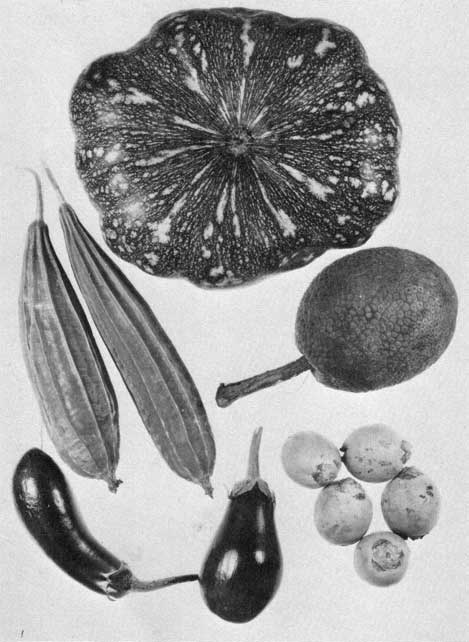|
same position in the diet as any
other fruit. On the other hand, we have included fruits of the family Solanaceae,
although they are borderline by our defini-tion. In addition, some might
consider the Solanaceae to be "vegetables," but we could not find, based
on use and perception, any such clear-cut distinction.
Fruits are often eaten raw, out of hand, but a few are eaten or are edible only when cooked. A cooked botanical fruit is often considered a vegetable. We have tried to eliminate botanical fruits that are used more as vegetables (fig. 3). Yet, there were traditional exceptions, including the breadfruit, clearly a fruit to everyone, yet used only as a vegetable. We have wrestled with the concept of "nut" as opposed to "fruit" and "seed." Botanically, a nut is a hard, in-dehiscent one-seeded fruit (fig. 4). In horticulture, how-ever, many fruits that are considered to be nuts do not fit this definition. Moreover, the exact distinction between seeds and nuts is vague, and we may have included certain seed-bearing species that others may not consider to be either fruits or nuts. 
Figure 3.-Fruits used as cooked vegetables. |

Figure 4.-Nuts and seeds of various kinds. Although edibility was one of our prime criteria
for including a selection, there are fruits that are consid-ered edible
by some and inedible by others. The dis-tinction is fuzzy, and we cannot
resolve the problem. We have preferred to err on the side of being inclusive
in these cases.
Size was another of our criteria. We have excluded very small fruits that are hardly worth the effort of harvest, except in emergency, but we have included many that are so tasty that their omission would be an error. The task of deciding which fruits to include was complicated by taxonomy. We have used the best sources of information available to us, but information is often lacking. For instance, experts are often confused by the variety of forms within broadly distributed species. Whether these forms are distinct species, in the sense that they are reproductively isolated from each other, or are only variants of one or more species often cannot be determined. Errors may also occur when the same form is given two or more names. In many cases we were not able to establish synonymy, and we believed it better to include too many names rather than too few. |